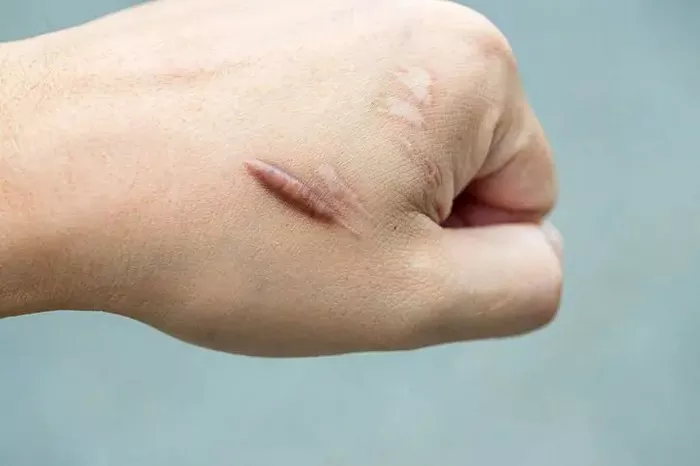Introduction:
Scar tissue is a natural part of the healing process after an injury or surgery. However, if left untreated, scar tissue can cause pain, discomfort, and limited mobility. In this article, we will explore the consequences of scar tissue buildup and the importance of treating scar tissue to prevent these issues.
What is Scar Tissue?
Scar tissue is a type of connective tissue that forms after an injury or surgery. It is made up of collagen, a protein that provides strength and support to the skin and other tissues. Scar tissue is different from normal tissue in that it is less flexible and has a different texture and appearance.
Causes of Scar Tissue Buildup:
Scar tissue can form for a variety of reasons, including:
Injury: Scar tissue can form after an injury, such as a cut, burn, or fracture.
Surgery: Scar tissue can form after surgery as part of the healing process.
Inflammation: Chronic inflammation can lead to the formation of scar tissue.
Infection: Infections can cause scar tissue to form as part of the body’s response to the infection.
Consequences of Scar Tissue Buildup:
If left untreated, scar tissue can cause a variety of issues, including:
Pain: Scar tissue can cause pain by putting pressure on nerves and other tissues. This can lead to chronic pain and discomfort.
Limited Mobility: Scar tissue can limit mobility by restricting the movement of joints and muscles. This can make it difficult to perform daily activities and can lead to muscle imbalances and weakness.
Adhesions: Scar tissue can cause adhesions, which are bands of scar tissue that form between organs or tissues. Adhesions can cause pain, discomfort, and digestive issues.
Nerve Impingement: Scar tissue can put pressure on nerves, leading to nerve impingement. This can cause pain, numbness, and tingling.
Cosmetic Issues: Scar tissue can cause cosmetic issues, such as keloid scars or hypertrophic scars, which can be unsightly and may cause self-consciousness.
Treatment Options for Scar Tissue:
There are several treatment options available for scar tissue, including:
Massage: Massage can help to break up scar tissue and improve circulation to the affected area. This can help to reduce pain and improve mobility.
Stretching: Stretching can help to improve mobility and flexibility by breaking up scar tissue and improving the range of motion of joints and muscles.
Heat Therapy: Heat therapy can help to reduce pain and stiffness by increasing blood flow to the affected area. This can help to break up scar tissue and improve mobility.
Cold Therapy: Cold therapy can help to reduce inflammation and pain by constricting blood vessels and reducing blood flow to the affected area. This can help to reduce the formation of scar tissue and improve healing.
Ultrasound Therapy: Ultrasound therapy uses high-frequency sound waves to break up scar tissue and improve circulation to the affected area. This can help to reduce pain and improve mobility.
Surgery: In severe cases, surgery may be necessary to remove scar tissue and improve mobility. This is typically reserved for cases where other treatments have been unsuccessful.
Preventing Scar Tissue Buildup:
Here are some tips for preventing scar tissue buildup:
Follow Proper Wound Care: Proper wound care can help to promote healing and reduce the formation of scar tissue. This includes keeping the wound clean and covered, and avoiding picking at scabs.
Stay Active: Staying active can help to improve circulation and prevent the formation of scar tissue. This includes gentle stretching and exercise.
Use Heat and Cold Therapy: Using heat and cold therapy can help to reduce inflammation and promote healing, which can help to prevent the formation of scar tissue.
Massage and Stretching: Regular massage and stretching can help to prevent the formation of scar tissue by improving circulation and breaking up scar tissue.
Conclusion:
In conclusion, scar tissue is a natural part of the healing process after an injury or surgery. However, if left untreated, scar tissue can cause pain, discomfort, and limited mobility. It is important to treat scar tissue to prevent these issues and improve overall quality of life. Treatment options for scar tissue include massage, stretching, heat and cold therapy, ultrasound therapy, and surgery. By following proper wound care and staying active, you can also help to prevent the formation of scar tissue. Consult with a healthcare professional to determine the best treatment plan for your scar tissue.
[inline_related_posts title=”You Might Be Interested In” title_align=”left” style=”list” number=”6″ align=”none” ids=”4362,4295,4285″ by=”categories” orderby=”rand” order=”DESC” hide_thumb=”no” thumb_right=”no” views=”no” date=”yes” grid_columns=”2″ post_type=”” tax=””]

































